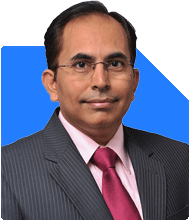Hello Sir,
I am 42 years old and started my MF journey last month's with below:
SBI Long Term Equity Fund - Direa t Plan Growth - 3500
Nippon I dia Large Cap Fund - Direct Plan Growth - 3000
Nippon India Small Cap Fund - Direct Plan Growth - 3000
Quant Multi Asset Fund - Direct Plan Growth - 3500
Quant Small Cap Fund - Direct Plan Growth - 3000
Motilal Oswal Midcap Fund - Direct Plan - Growth - 4000
Just wanted to check with you, did I pick the right MF's for the sum of 2cr in 20 years?
Please let me know if I need to change anything.
Thank you in Advance.
Ans: You've made a strong start by investing in mutual funds. Allocating across different categories like large-cap, mid-cap, and small-cap shows a balanced approach. It helps manage risk and offers growth potential. However, there are a few areas to assess further to align better with your goal of Rs. 2 crore in 20 years.
Let’s look at each aspect of your portfolio to see if it fits your long-term goal.
Large-Cap Investments
Nippon India Large Cap Fund (Rs. 3,000 SIP)
Large-cap funds invest in established companies. They are relatively stable and safer but might provide moderate returns compared to small and mid-caps. Given your 20-year horizon, large-cap funds will offer consistent returns but may not be enough to meet your aggressive Rs. 2 crore goal. You can maintain your large-cap exposure, but keep it as part of a broader strategy for stability.
Consider focusing more on actively managed large-cap funds. Direct plans may save on expense ratios but lack the active guidance that regular plans offer when investing through a certified financial planner. With professional advice, you can gain better insights into fund rebalancing and market shifts.
Small-Cap Investments
Nippon India Small Cap Fund (Rs. 3,000 SIP)
Quant Small Cap Fund (Rs. 3,000 SIP)
Your exposure to small-cap funds is good for high growth. These funds have the potential to generate superior returns over long periods. However, they can also be very volatile. As you aim for 20 years, the small-cap exposure might work well, but keep a close watch.
Too much reliance on small-cap funds can introduce higher risk. Diversifying with mid-caps and multi-asset funds can balance this. Also, actively managed small-cap funds perform better than index or direct funds. A certified financial planner can help in making necessary adjustments based on market trends.
Mid-Cap Investments
Motilal Oswal Midcap Fund (Rs. 4,000 SIP)
Mid-cap funds balance the volatility of small-caps with the stability of large-caps. They often offer higher returns than large-caps but with more risk. Your mid-cap allocation looks solid, and over 20 years, this portion of your portfolio can deliver strong results.
As with small-cap funds, it’s beneficial to invest in regular plans through a certified financial planner. Direct plans may seem cost-effective but miss out on professional advice. Regular fund plans offer rebalancing services that can enhance long-term growth.
Multi-Asset Investment
Quant Multi Asset Fund (Rs. 3,500 SIP)
Multi-asset funds provide diversification across asset classes such as equity, debt, and gold. These funds help reduce risk, especially in market downturns. Including this fund in your portfolio gives some balance to your more aggressive small and mid-cap funds.
However, ensure the fund is actively managed to respond to market conditions. You should evaluate whether this allocation will meet your Rs. 2 crore target or if you need to increase contributions over time.
ELSS/Tax-Saving Investments
SBI Long Term Equity Fund (Rs. 3,500 SIP)
This is an ELSS (Equity-Linked Savings Scheme) that offers tax benefits under Section 80C. ELSS funds typically invest in diversified equities and can provide high growth over the long term. The tax-saving aspect is good for overall financial planning, but don't rely solely on ELSS for reaching your Rs. 2 crore goal.
Consider increasing your exposure to growth-oriented equity funds while keeping ELSS as a tax-saving tool. Active management is also important here, as you may need to rebalance this portion based on the tax situation in the future.
Portfolio Diversification Assessment
You’ve covered different fund categories, but it’s important to diversify even further. Too much exposure to small-cap and mid-cap funds could increase your portfolio's volatility. You can look at the following:
Increase your contribution to large-cap or flexi-cap funds for stability.
Include more actively managed funds, as they offer dynamic strategies and professional guidance.
Consider regular plans instead of direct plans to access professional help. Certified financial planners can guide you in navigating different market conditions.
Importance of Rebalancing and Regular Review
A 20-year investment horizon requires regular portfolio reviews. As markets shift, your fund allocations may need adjustments. Relying on direct plans without professional oversight can lead to missed opportunities or overlooked risks.
Active rebalancing of your portfolio is essential to achieve your Rs. 2 crore goal. A certified financial planner can assist you in monitoring your portfolio and suggesting rebalancing at key intervals, maximizing growth potential.
Taxation Considerations
You should also consider the tax implications of mutual fund investments:
Equity Funds: Long-term capital gains (LTCG) above Rs. 1.25 lakh are taxed at 12.5%. Short-term capital gains (STCG) are taxed at 20%.
Debt Funds: LTCG and STCG are taxed as per your income tax slab.
Be mindful of these taxation rules when planning your withdrawals or rebalancing your investments in the future.
Active vs Direct Funds
Direct funds may have lower costs, but they lack the crucial advantage of professional advice. Regular funds, when chosen with the help of a certified financial planner, provide personalized guidance. They can help you navigate market fluctuations, track performance, and recommend timely switches. Direct funds, though cheaper, can be inefficient without proper oversight.
By working with a certified financial planner, you’ll also get support with paperwork, tracking, and decision-making, which can be invaluable, especially during market volatility.
Reaching Rs. 2 Crore in 20 Years
Your current portfolio is a good start, but it needs fine-tuning:
Increase your allocation to large-cap and flexi-cap funds for stability.
Balance your small-cap exposure with more mid-cap or multi-cap funds.
Consider regular plans instead of direct plans to get professional guidance.
Keep an eye on tax-saving opportunities but don’t over-allocate to ELSS funds.
To reach Rs. 2 crore, you might also need to increase your SIP contributions over time. Regular reviews with a certified financial planner can help you stay on track, ensuring you meet your goal in 20 years.
Finally
Achieving Rs. 2 crore in 20 years is possible with consistent investing, proper fund selection, and active management. You have a solid start, but slight adjustments can improve your portfolio's potential. Regularly consult with a certified financial planner to ensure your strategy remains aligned with your long-term goals.
Best Regards,
K. Ramalingam, MBA, CFP,
Chief Financial Planner,
www.holisticinvestment.in
https://www.youtube.com/@HolisticInvestment


























